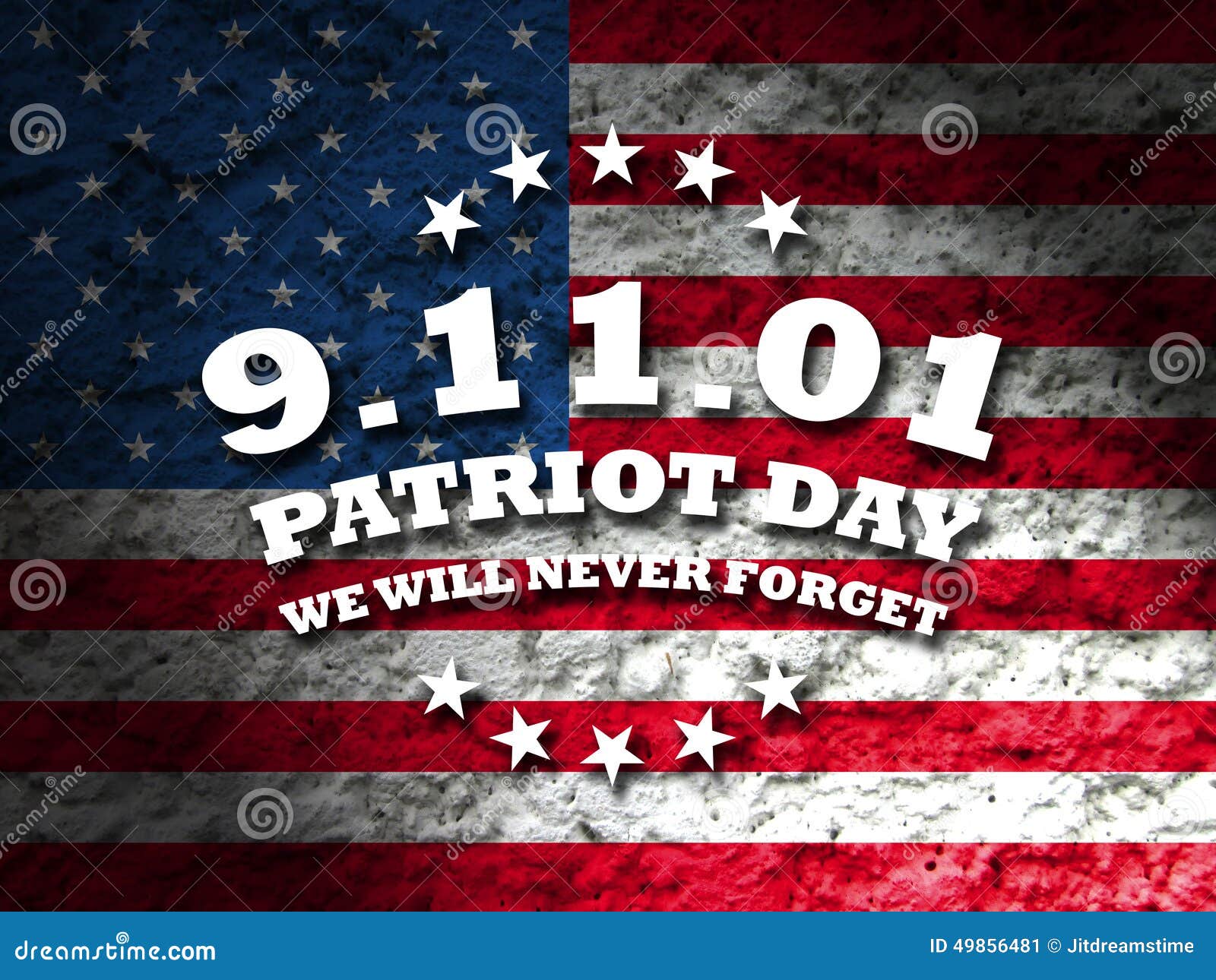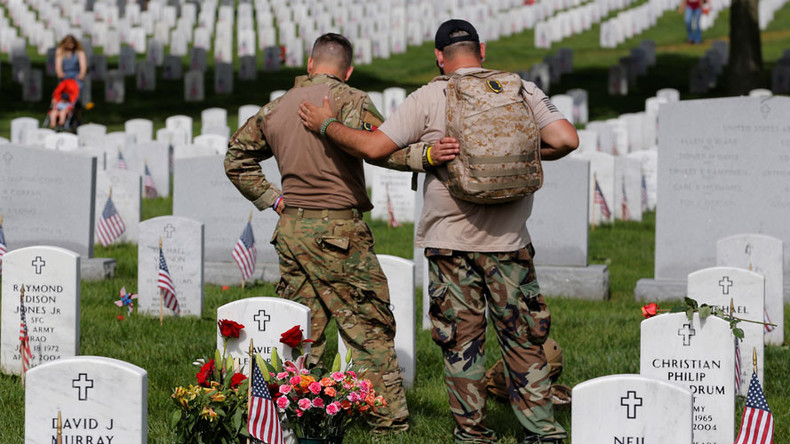Each episode will focus on the different levels of heroism people resorted to during the event and boasts never-before-seen footage, including from apartments and streets just after the planes hit. Shot over three years, the documentary filmmakers interviewed 54 people in person for a total of 235 hours of material. "We all remember exactly where we were on Sept. 11, 2001. Amidst the tragedy, chaos and sadness, what we also remember are the incredible feats of heroism, selflessness, and humanity on display that day," said President of National Geographic Global Television Networks Courteney Monroe. "With this series, we aim to immortalize these stories and continue National Geographic's legacy of authentic, powerful storytelling that provides deeper meaning around important historical events." The series chronicles the events through archival footage and interviews with first responders and survivors who describe the unimaginable tragedy, and also share stories of heroic acts and humanity. The six-part series, produced in official partnership with the 9/11 Memorial & Museum, will air on Nat Geo over four consecutive nights, beginning August 29 at 9/8c, with episodes available to stream the next day on Hulu.
It chronicles the events of that day in 2001—at times, minute by minute—from the perspective of first responders and survivors, also looking at the heroism prompted by 9/11 and the tragic day's lasting impact. The active horrors the disaster wrought unfolded in the span of a few hours, from the time the first plane hit through the second tower's collapse. But the accounts given by those who lived to talk about them fill every moment of this four-night, six-episode documentary series, making footage from that day come alive in ways few other reports have. "With such deep access to footage and first-hand stories from those who bravely sat down with us to share their experiences, the series offers hope that through immense difficulty, we can rise above when we work together," added David Glover, executive producer and co-founder of 72 Films. The filmmakers contextualize the footage from that day by editing present-day interviews with 54 survivors around it, some of which prominently features the interviewees. Seeing archival footage of a younger Pfeifer on that day, directing his men from the lobby of the North Tower while its top floors were in flames, is extraordinary in the way that it showcases his composure in the face of imminent death.
His description of his inner turmoil in those moments places puts us right in the midst of anxious uncertainty with him. If we couldn't do that before, executive producers Dan Lindsay and T.J. Martin make that possible by placing viewers inside the frightened, thumping hearts of people who were inside the towers and the first responders who ran in and up the nearly 100 flights of stairs of the North Tower to get people out. Through footage featuring Pfeifer and his team we see the first plane hit. We watch their reactions and those of other New Yorkers in that moment as that flawless Tuesday explored in flames and disintegrating concrete and steel. We watch as bystanders head toward the blast out of curiosity and hear as their companions scream at them to run for their lives.
Then we see the disaster unfold in real time from different angles, from the air and on the ground, outside the rolling poisoning clouds and from inside, watching abandoned cameras continue rolling as the world darken in the moments after building crash to Earth. To create the docuseries, the filmmakers sifted through nearly 1000 hours of archival footage, some of which had never been seen before, and logged 235 hours of interviews with 54 people. The documentary team worked on the project for three years and during that time interviewed over 50 people and went through nearly 1,000 hours of footage. The team also worked with an organization that specializes in helping media professionals who have to look at disturbing images and footage. "One of the interesting things they did point out was that you often don't realize the effect it's having on you. So, you can suddenly have these intrusive thoughts or not sleep," explained Marsden. "I think this is something that almost everybody we interviewed who was there on the day experienced times a million."
Cast members of the documentary also shared their thoughts on how the documentary highlights lessons learned from the aftermath of 9/11 and how the series can help Americans apply those lessons to today's pandemic world. Lindsay also remarked, "I don't think any of us are prepared to answer that complicated question of what happened but I think the idea of watching this series is to remind us of that time and how people came together in that way and to ask that question through watching it, what has happened." The series follows the terrorist attacks through archival footage, eyewitnesses, survivors, with new footage never seen before.
But as you experience these hours – not just watch, but feel them – what may immediately strike you is how antiseptic most of the documentary reports or news coverage have been. After the attacks the media's attention turned to the how and the why of them, offering deep dives into the structural collapse of the Towers, the government's failure to act on intelligence tip-offs or insights into how the hijackers planned and trained to turn passenger planes into weapons of mass destruction. Close your eyes and you can probably picture George W. Bush's grim face as he sat in that classroom, receiving the news. In documentary after documentary, on cable, streaming and broadcast, you can hear, over and over, the air-traffic-control distress calls.
You can see, again and again, the stunning footage of an airliner slamming into the north tower of the World Trade Center, captured by a documentary filmmaker accompanying firefighters on a routine call. You can be reminded, time after heartbreaking time, what a beautiful, blue-sky September morning it was. Emmy®-winning 72 Films (Inside North Korea's Dynasty) and Academy Award®-winning executive producers Dan Lindsay and T.J. Martin came together to produce a documentary series marking 20 years since the attacks of 9/11. Made in official collaboration with the 9/11 Memorial & Museum. The close to 3,000 people that died between the flights that were downed, the Pentagon and the WTC all suffered horrific fates, as have the first responders who have gotten sick and died in the years since due to the toxins they inhaled during the rescue efforts after the towers fell.
For all of their sakes, we're glad documentaries like this are out there, as tough as they are to watch. Most of the stories are hopeful, choosing to focus on acts of courage, even when the outcome isn't 100% positive. The docuseries does not really discuss long-term health effects of the day, despite many of the contributors living with them. But Bogado didn't want to shy away from the full truth of the day, which he calls "the best and the worst of humanity." While most of the worst came from the terrorist attacks themselves, there are a few other stories sprinkled in about individuals who chose not to help, likely out of fear, and saved only themselves when the opportunity arose. In May 2020, it was announced National Geographic had ordered a 6-episode documentary limited series revolving around the 9/11 terrorist attacks with Dan Lindsay, T. J. Martin and David Glover set to serve as executive producers. Production companies involved in the series include 72 Films and the 9/11 Memorial Museum.
If it seems like a stretch, "Epicenters" soon makes it difficult to see the subject otherwise, drawing connection after connection across the years. There is Rudy Giuliani, "America's Mayor" in the days after the towers fell, spouting election-hoax fan fiction at Four Seasons Total Landscaping. There is the rash of Islamophobic attacks after Sept. 11, echoing in the xenophobia of the Trump era. There are emergency medical workers suffering from 9/11-related illnesses that loom as pre-existing conditions during the pandemic. The TV specials for the Sept. 11 anniversary offer any number of ways to return to hell.
This weekend, remembrances and programing including numerous documentaries will mark 20 years since the Sept. 11 attacks, providing time to reflect as we remember the events, or for the next generation that was too young to remember or wasn't born yet to learn. The documentary was developed and executive produced by the Emmy Award-winning 72 Films ("Inside North Korea's Dynasty") and Emmy- and Academy Award-winning executive producers Dan Lindsay and T.J. We're continuing to suggest resources to learn more about that day and its consequences. It gives you insight into why things happened and what they meant to the people who experienced them. "The intention of the series was always to highlight the humanity of that day, to kind of eschew the geopolitics of it and really focus on the people who were there and their personal stories," said Executive Producer Dan Lindsay at the Television Critics Association's summer press tour. "Our approach was to pull focus on the individuals who lived through that day," added Series Producer Caroline Marsden.
But Marsden feels it is to those survivors' benefit that such images keep being shared. Two decades after the 9/11 terrorist attacks on America, documentary filmmakers are still trying to make sense of the horrific events — even as aftereffects continue to ripple through the geopolitical landscape. For all the devastation, Pfeifer recalls, "There were also signs of hope. And at this extraordinary time in history, those little moments of caring for another were the difference between life and death." Through its subject, the documentary carefully honors the people whose sacrifices made all the difference, like the small team of firemen who kept heading up stairs to save more than 70 people and never made it out. Or the three-man security team who stayed behind to make sure all of their 2,000 people escaped, and were still inside when the second Tower collapsed on top of them. Or, of course, the group of people who overpowered the hijackers of United Airline Flight 93, including a young man whose mother called him to tell him what was going on and encouraged him to fight for his life – hoping, she says, that her son could be a killer.
You may want to look away, but the eyes of the men remembering that day as they lived it hold us. By having subjects speak directly into the camera, the filmmakers create an intimacy between the survivors and the viewers that makes is easier to bear witness and relive that nightmare with them and for them. Leary, for example, talks about a choice he made that saved his life by a matter of seconds, whereas another wasn't so lucky. He still wears the wide-eyed shock of it as he recounts the memory. If you're moved to weep in the course of watching this, or have other intense reactions, that's part of bargain. It's only a portion of what these survivors felt and continue to feel.
The highly sensory focus of these hours can be overwhelming, especially when we see those unforgettable shots of of people jumping from the highest floors of the North Tower, choosing that kind of death over immolation. But in keeping with its insistent focus on the living, what stays with us is how those moments register from the firefighters' perspective that day – the dreadful thud of bodies hitting the ceiling above them, the absolute shock registering on their faces as they realize what's happening. One could argue over which director is most essentially New York. But Lee's passionate heckler's breed of New York-ness may be the best suited to this subject. He is loving and critical, impulses that New Yorkers know as synonyms.
And his focus on diversity and race helps him find less-heard voices in a much-told story, like those of the Vulcan Society for Black firefighters, or of the Black flight attendant who guiltily recalls "racially profiling" a Saudi passenger after Sept. 11. You can divide most of the anniversary specials between those that focus closely on the day that the towers fell and those that pull back, way back, to look at what emerged from the dust. But when paired with survivor and first responder accounts, it does show that, among all the tragedy and death, there were heroes of all types, from the firefighters who went up the stairs to what many thought was likely doom, to the ordinary workers like Clifford who tried to help those that needed it.
In fact, what has always been remarkable about that day was how little people panicked, whether they were in the towers themselves or in the area around them. People helped each other, and no one seemed to be looking out for only themselves. Made in collaboration with the 9/11 Memorial and Museum, the six-part documentary will feature first responders and survivors recounting September 11, 2001 — at times, minute by minute.
PBS'sGeneration 9/11tells the stories of seven children who never met their fathers because of the terrorist attacks. Now in their twenties, they reflect on what it was like to grow up without their fathers, their relationship with 9/11, and the direction they see the world headed after 9/11. Still, perhaps the most beautiful aspect of this oft-agonizing and meticulous series lies not within the footage of witnesses, but in the moments of hope and resiliency that underscore those fateful events and the days that followed.
The team also had the guidance of The 9/11 Memorial & Museum for their docuseries. Although Marsden says no one at the museum had "veto power" when it came to featured footage, she stresses the importance of their collaboration, both from an archival point of view and a personal one. Director Daniel Bogado told each subject to take a full day off for their interviews. He sat with them for hours so they could tell their uninterrupted stories, some of which, he notes, when told from start to finish, "were two hours long" on their own. His approach was to keep them "in the moment" as much as possible.
Pamela Yoder and Steven Rosenbaum, considered the world's leading historians on the tragedy, directed "The Outsider," about the National 9/11 Memorial and Museum in Manhattan. The documentary, which premiered on Facebook last month and is available on Amazon and iTunes, follows the journey of the struggling novelist turned museum creative director Michael Shulan to build an institution that was "democratic" in its voice and curation. "If you watch the film, the only voices you ever hear are from people who were there on the day," added co-executive producer Caroline Marsden. To create this docuseries, the filmmaking team sifted through almost 1,000 hours of archival footage - some of it, never seen before. In official collaboration with the 9/11 Memorial & Museum, this documentary series take viewers through harrowing moments of the historic morning of September 11, 2001.
"Not a cloud in the sky," Clifford recalls at the top of the premiere installment. Who would have gussed that a few hours later the World Trade Center towers would be gone, that ash would black out the sun and concrete particulates choke the air? It was still the same day, and yet in the space of a few hours a new era began. "This was my world," Clifford observed, "never to be the same again."
The COVID-19 pandemic has claimed hundreds of thousands of American lives, and the death toll is still escalating. In Afghanistan, the war launched in retaliation for the 9/11 attacks is finally ending; America is not victorious and worse, other terrorists are attacking personnel on their way out. The children who fled schools or lost parents that morning are now grown adults. (Two different documentaries, on the History Channel and Discovery+, focus on them.) But the story, as told, is mostly the same.
The "Frontline" special "America After 9/11" is among many new TV documentaries to mark the 20th anniversary of the Sept. 11 attacks. The best go beyond the day itself to consider its lasting impact. They have gathered all of this footage and audio over the past two decades, and Bogado manages to stitch together the hundreds of hours of footage into a recounting of the day that will bring back all of the visceral emotions that anyone who remembers that day had, and make it feel like it just happened a month ago. We also see footage of Clifford helping a severely burned woman get to an ambulance, all the while not knowing that his sister and niece were in UAL 175. Some of the most harrowing footage, though, is of the people at or near the impact areas, hanging from the windows rather than burn to death, and the crashes of bodies hitting the ground as firefighters gather in the lobby of the North Tower to go up and rescue as many people as possible.
Tom Canavan, a 9/11 survivor who worked in the building and then got a job in the museum is featured in the final episode of the docuseries talking about the importance of the space being sacred for those lost on the ground. "It was really to kind of give an unflinching account, and honor and respect the lens of those who survived it," says TJ Martin, an executive producer of the series. PHILADELPHIA -- It's hard to believe we are coming up on two decades, but to commemorate the 20th Anniversary of 9/11, National Geographic is debuting a four-night, six-part documentary series this Sunday. It's difficult, uncomfortable and yet reminds you that there are humans that actually care for others without giving a thought for themselves.
I'f you don't cry at any time while watching this then you aren't human. Episodes are edited in such a way to make the most of this human drama without cheapening each individual's accounts, circling back to reveal endings of rescue efforts that sound hopeless at first. But the editing choices maintain the tension of not knowing, even though those telling these stories know how they end, without robbing them of their integrity. Then, by sticking us back inside blinding clouds cut by falling, flaming debris as the tales unfold, we obtain a visceral sense of how dire every second was, that living through it was indeed a miracle. An aerial view of ground zero burning after the September 11 terrorist attacks.
Lee's interviews — with hundreds of people, from high elected officials to heavy-equipment operators at ground zero — are warm, emotional, sometimes sparring. He ribs every Red Sox fan he talks to; when his subjects need time to collect themselves, he lets the moments play out. For politicians, he lets the raspberries fly freely (the captions refer to Donald J. Trump, in the words of the rapper Busta Rhymes, as "President Agent Orange"). The "Frontline" special "America After 9/11," premiering Tuesday on PBS, is driven by a striking video juxtaposition.
First, on the Capitol steps the day of the attacks, a chorus of members of Congress, Republican and Democratic, senators and representatives, join to sing "God Bless America." Two decades later, on the same site, a mob besieges Congress in an attempt to overturn the results of an election. TV's treatment of Sept. 11 has changed over the years, in bits and pieces. The adrenaline rush of "24" gave way to the moral grayscale of "Homeland." MSNBC finally ended its grim tradition of replaying the live coverage of the attacks.
But the general approach of the memorial specials, tightly focused on honoring the loss and sacrifice of one discrete day, has kept a kind of ritual familiarity. The heart palpitations of anxiety that I and millions of other suffered that day and for weeks afterwards came right back, and seeing the footage of the planes hitting the towers hurt just as much as they did 20 years ago. An in-depth account of 9/11, from the first plane hitting the north tower to the last survivors being rescued, recounted by witnesses, heroes and survivors. The series spans seven hours, with the first episode of the series running at feature length. The first episode premiered June 11 at the Tribeca Film Festival as an official selection.
The series is also an official selection of AFI DOCS and Sheffield International Documentary Festival. While the documentary begins like many accounts that preceded it — imagery of New York City firefighters and businessmen who worked at the World Trade Center — little time elapses before realizing this series is different. "When we're looking at footage of people waving from the top of the tower, we had to make sure that those people were not identifiable. But there were other events of the day — from the crash at the Pentagon, to the hole United Airlines Flight 93 created in a field in Somerset County, Penn., to individual stories of escape and survival and bravery — that may have receded to the backs of memories. And for Gen Z, those stories are just stories — not memories at all.
"In the course of watching it, you're getting the granular details from so many different points of view from individuals," Martin says. "They are incredible tales of survival from individuals who were on the 80th floor of South Tower, the first responders, even members of the media who showed up to document the events and feel it in real-time." Due to streaming rights, a few shows are not included in the Hulu plan and will instead play interruption-free with a short ad break before and after each episode. Watch full seasons of exclusive series, classic favorites, Hulu Originals, hit movies, current episodes, kids shows, and tons more. Others like Frank Razzano, a lawyer who barely made it out of the North Tower's adjoining Marriott Hotel, make that point sorrowfully as he explains that his reflexive instinct upon heard the first crash was to secure the legal documents he had with him. "I was at the apex of my career at this time," he said, acknowledging how silly that sounds in the face of death.
For the most part, though, coverage of the September 11, 2001 attacks all these years later enables us to emotionally separate from the human nightmare of it. To take that part in requires us to accept the fact that we are indeed vulnerable, that the actions of 19 zealots could take the lives of 2,977 people and injure more than 6,000 others. Joseph Pfeifer, a battalion chief with the Fire Department of New York, had 20 years and six days on the job. That meant he could have retired six days prior, but he was enjoying his time with the department so much that he wasn't even thinking about leaving. There's a sobering meta-lesson in the fact that the most artful of this season's Sept. 11 documentaries became an example of one of the very problems it diagnosed.
But at least the resolution shows that criticism can make a difference, and that it's not too late to look at history seriously and make a change. But the history of Sept. 11 goes far beyond war and foreign policy. It affected domestic politics, domestic enmities and even American culture. Focusing on the emotion and heroism of one day, of course, avoids getting ensnared in everything that came after.























